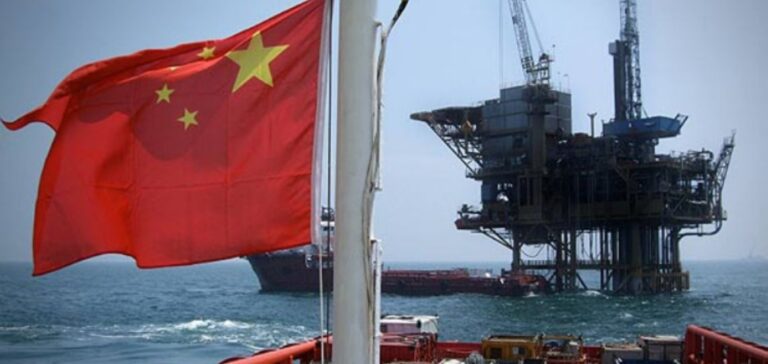China’s crude oil throughput surged by 9.9% in the first half of 2023, surpassing GDP growth, as per National Bureau of Statistics data. In order to stimulate the economy, Chinese refineries are anticipated to increase throughput in the second half of the year. This will drive oil product exports and meet domestic demand.
China’s Crude Oil Throughput Surges, Analysts Expect Further Growth to Support Economic Recovery
China’s crude oil throughput surged by 9.9% in H1 2023, surpassing its GDP growth of 5.5% in the same period. This robust growth indicates the potential for a stronger economic recovery. Analysts suggest that Chinese refineries may need to boost throughput in H2 to support slower-than-anticipated economic growth. This move aims to lift oil product exports and satisfy domestic demand.
China’s Q2 GDP growth at 6.3% falls below the estimated 7.3%, indicating a stalled economic recovery. Chinese government implements monetary easing amid limited stimulus potential due to high debt levels.
“China’s widely anticipated reopening has so far failed to extend beyond travel and services, with its economic recovery losing steam after the bounce earlier in the year,” IEA said on its report released July 13.
Market analysts predict that China’s crude oil throughput will continue to rise in the second half of 2023 to meet growing domestic demand. Estimates suggest an increase of approximately 400,000 barrels per day (b/d), pushing the average throughput above 15 million b/d. Factors contributing to this growth include reduced maintenance shutdowns, increased demand for gasoil during the peak season, and potential support from manufacturing goods exports. Additionally, gasoline and jet fuel consumption is expected to rise during the summer holidays.
Crude Oil Throughput Drives Chinese Economic Growth and Boosts Production
Higher crude oil throughput not only addresses domestic demand but also boosts indicators of industrial activity, consequently impacting economic growth. The surplus of oil products resulting from increased throughput can be exported, further strengthening China’s position in global markets. China’s industrial production witnessed a year-on-year rise of 3.8% in H1 2023. This growth, combined with the commissioning of new refineries, such as Shenghong Petrochemical and Guangdong Petrochemical, has contributed to the country’s increased crude oil production.
S&P Global Commodity Insights on July 11 projected China’s real GDP growth at 5.5% in 2023 and to slow to 5.0% in 2024. “The Chinese government has stepped up monetary easing in response to a weakened economic recovery. Additional stimulus measures will likely follow. However, the scale of the new stimulus will likely be limited, partly owing to China’s high debt level. The new stimulus will likely stabilize faltering growth momentum but will not induce a robust recovery, given the deep scarring of the private business sector and households,” S&P Global said.
China’s crude oil output has experienced steady growth in H1 2023, thanks to continuous emphasis on energy security and production commitments from national oil companies such as PetroChina, CNOOC, and Sinopec. In the first six months of the year, China’s crude oil output increased by 2.1% year-on-year, reaching 4.25 million b/d. This significant growth was concentrated in oil blocks located in the Xinjiang region and Bohai Bay. Such concentrated production efforts contribute to China’s overall crude oil supply and support the country’s energy goals.






















